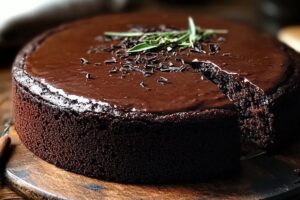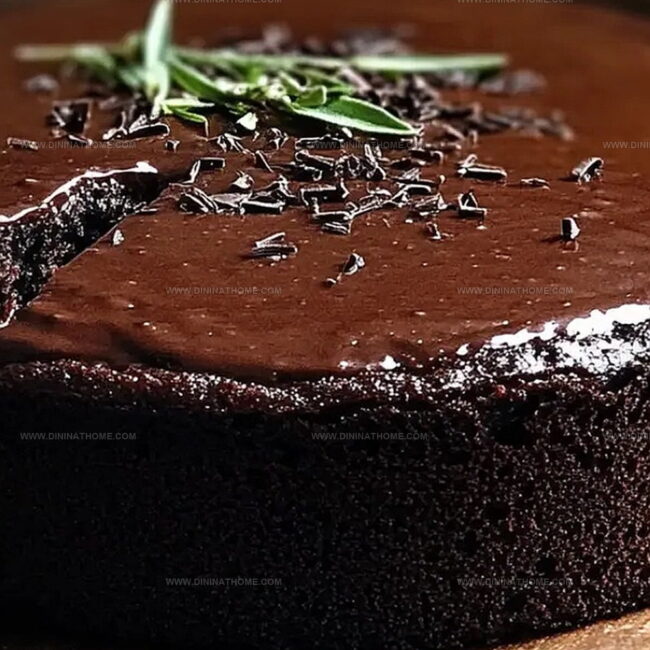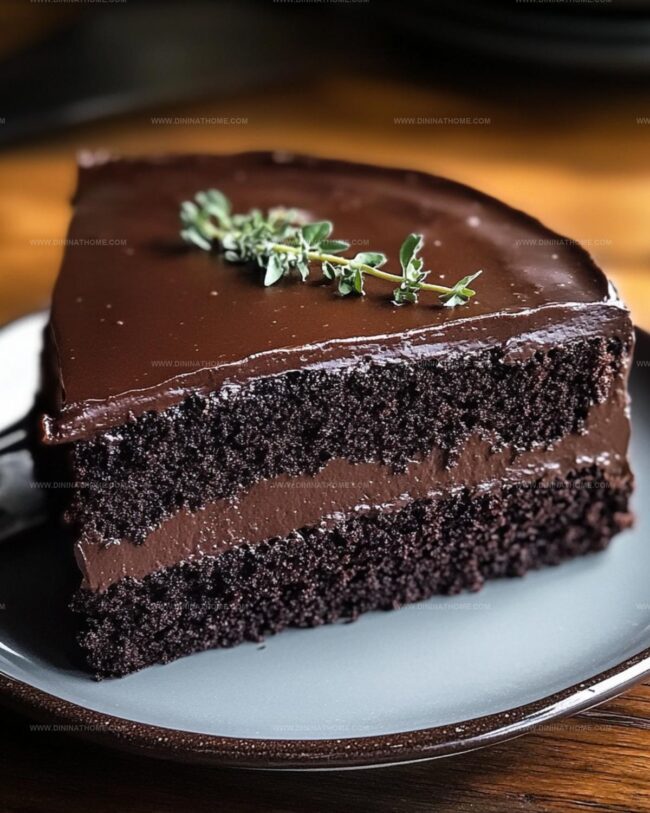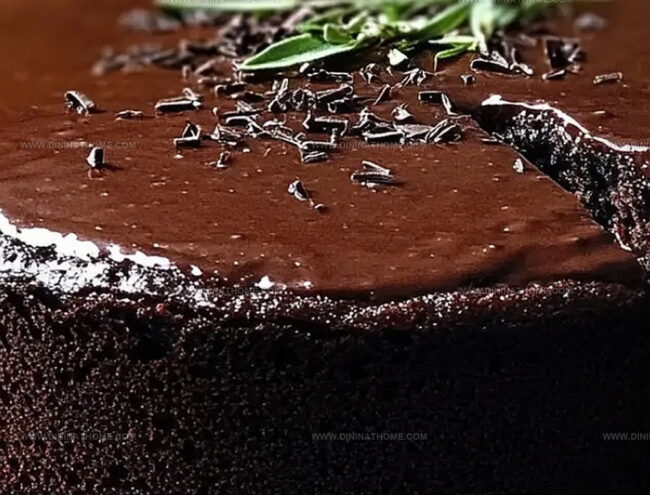Irresistible Chocolate Buttermilk Cake Recipe For Sweet Cravings
Memories of grandma’s kitchen bloom whenever I whip up this delectable chocolate buttermilk cake that melts hearts instantly.
Soft crumbs whisper stories of comfort and joy.
Rich cocoa dances with tangy buttermilk, creating a symphony of flavors that surprises every palate.
Baking this cake feels like wrapping yourself in a warm, sweet embrace.
Delicate yet decadent, each slice promises pure indulgence without unnecessary complexity.
Home kitchens transform into magical realms with this simple yet extraordinary dessert.
Rich and Moist Chocolate Buttermilk Cake to Savor
Savor Simplicity: Effortless Baking Delight that Guarantees Success
Chocolate Buttermilk Cake – Ingredient Overview
Dry Ingredients:Wet Ingredients:Frosting Ingredients:Baking the Perfect Chocolate Buttermilk Cake
Step 1: Warm Up the Oven
Crank the oven to a toasty 350°F.
Grab two round cake pans and give them a quick spray with cooking oil, then dust with a light layer of flour to prevent sticking.
Step 2: Mix Dry Ingredients
Grab a spacious mixing bowl and toss in:Whisk these together until they’re perfectly blended.
Step 3: Combine Wet Ingredients
Pour into the dry mixture:Stir everything until it creates a smooth, consistent batter.
Step 4: Add Liquid Magic
Slowly stream in hot water while mixing.
Don’t worry if the batter looks super thin – that’s exactly how it should be.
Step 5: Bake to Perfection
Divide the batter evenly between the prepared pans.
Slide into the preheated oven and bake for 30-35 minutes.
The cake is ready when a toothpick comes out clean from the center.
Step 6: Cool Down the Layers
Let the cakes rest in their pans for 10 minutes.
Then carefully transfer to a wire rack to cool completely.
Step 7: Whip Up Chocolate Frosting
Beat softened butter until it’s smooth and creamy in a large bowl.
Step 8: Create Frosting Base
Gradually mix in:Beat until everything is well combined and looks deliciously smooth.
Step 9: Finish the Frosting
Add:Whip until the frosting becomes light and fluffy.
Step 10: Assemble the Cake
Once the cake layers are completely cool, spread a generous layer of frosting on the first layer.
Carefully place the second layer on top.
Cover the entire cake with remaining frosting, creating a delectable chocolate masterpiece.
Buttermilk Cake Tips for Rich Chocolate Texture
Add buttermilk at room temperature to ensure even mixing and prevent clumping, which helps create a super tender cake texture.
Never overmix the batter – stir just until ingredients combine to keep the cake light and prevent tough, dense results.
Use hot water carefully to activate cocoa’s rich flavor without compromising the batter’s delicate structure – pour slowly while mixing.
Chill cake layers for 15-20 minutes before frosting to minimize crumbs and create a smoother, more professional-looking finish.
Experiment with adding coffee or espresso instead of hot water to intensify the chocolate’s depth and create a more complex taste profile.
Reheat Chocolate Buttermilk Cake Leftovers
What Works with Chocolate Buttermilk Cake
Chocolate Buttermilk Cake Rich Flavor Variants
FAQs
Buttermilk helps create a tender, moist cake texture by breaking down tough gluten proteins and adding subtle tanginess that enhances the chocolate flavor.
You can make a buttermilk substitute by adding 1 tablespoon of vinegar or lemon juice to 1 cup of regular milk and letting it sit for 5 minutes before using.
Insert a toothpick into the center of the cake – if it comes out clean or with just a few moist crumbs, the cake is done. Avoid overbaking to maintain moisture.
The combination of cocoa powder, hot water, and buttermilk creates an incredibly rich, deep chocolate flavor and incredibly soft crumb that sets this cake apart from standard chocolate cake recipes.
Print
Chocolate Buttermilk Cake Recipe
- Total Time: 50 minutes
- Yield: 12 1x
Description
Indulgent chocolate buttermilk cake melts hearts with its rich, velvety crumb and deep cocoa essence. Moist layers promise pure comfort, inviting chocolate enthusiasts to savor each heavenly bite.
Ingredients
Main Dry Ingredients:
- 2 cups all-purpose flour
- 2 cups granulated sugar
- 3/4 cup unsweetened cocoa powder
- 2 teaspoons baking powder
- 1 1/2 teaspoons baking soda
- 1 teaspoon salt
Liquid and Binding Ingredients:
- 1 cup buttermilk (at room temperature)
- 1/2 cup vegetable oil
- 2 large eggs (at room temperature)
- 2 teaspoons vanilla extract
- 1 cup hot water
Frosting Ingredients:
- 1 cup unsalted butter (softened)
- 3 1/2 cups powdered sugar
- 1/2 cup unsweetened cocoa powder
- 1/2 cup buttermilk (at room temperature)
- 2 teaspoons vanilla extract
- 1 pinch of salt
Instructions
- Prepare the oven environment by setting the temperature to 350°F (175°C) and preparing two 9-inch round cake pans with a light coating of grease and flour.
- Combine all dry ingredients – flour, sugar, cocoa powder, baking powder, baking soda, and salt – in a large mixing bowl, whisking thoroughly to ensure even distribution.
- Incorporate wet ingredients into the dry mixture: buttermilk, vegetable oil, eggs, and vanilla extract. Blend until the mixture achieves a uniform consistency.
- Slowly introduce hot water into the batter, stirring continuously to create a smooth, thin liquid base.
- Distribute the batter equally between the prepared cake pans, ensuring an even surface.
- Place pans in the preheated oven and bake for 30-35 minutes, monitoring until a toothpick inserted into the center emerges clean.
- Allow cakes to rest in their pans for 10 minutes, then carefully transfer to a wire rack for complete cooling.
- Prepare the frosting by whipping softened butter until it reaches a creamy texture.
- Gradually fold in powdered sugar and cocoa powder, mixing until fully integrated.
- Enhance the frosting with buttermilk, vanilla extract, and a pinch of salt, beating until achieving a light, fluffy consistency.
- Once cakes have cooled completely, apply a generous layer of frosting between cake layers and cover the entire exterior with remaining frosting.
Notes
- Ensure buttermilk is at room temperature for better ingredient integration and smoother cake texture.
- Replace vegetable oil with melted coconut oil for a richer, more distinctive flavor profile.
- For gluten-free option, substitute all-purpose flour with a 1:1 gluten-free baking blend to maintain cake’s tender crumb.
- Swap regular cocoa powder with Dutch-processed cocoa for deeper, more intense chocolate taste and darker color.
- Prep Time: 20 minutes
- Cook Time: 30 minutes
- Category: Desserts
- Method: Baking
- Cuisine: American
Nutrition
- Serving Size: 12
- Calories: 360
- Sugar: 40 g
- Sodium: 280 mg
- Fat: 18 g
- Saturated Fat: 8 g
- Unsaturated Fat: 9 g
- Trans Fat: 0 g
- Carbohydrates: 52 g
- Fiber: 2 g
- Protein: 4 g
- Cholesterol: 35 mg





James Walker
Lead Recipe Developer & Culinary Educator
Expertise
Southern Cuisine & Farm-to-Table Cooking, Recipe Development & Testing, Culinary Education & Instruction
Education
School: Auguste Escoffier School of Culinary Arts
Program: Diploma in Culinary Arts and Operations
Focus: Comprehensive training in classical and modern culinary techniques, kitchen operations, and farm-to-table practices.
James didn’t learn cooking from a TV show, he learned it from busy kitchens, family gatherings, and long afternoons spent testing recipes the hard way.
After training at the Auguste Escoffier School of Culinary Arts, he brought his love for real, down-to-earth food to every dish he makes.
At Dining At Home, James loves building recipes that feel familiar but still have something special, like adding a twist to a classic or making a slow Sunday dinner feel brand new.
When he’s not in the kitchen, you’ll probably find him swapping garden tips at the farmers’ market or teaching his daughter how to flip pancakes without a mess (almost).